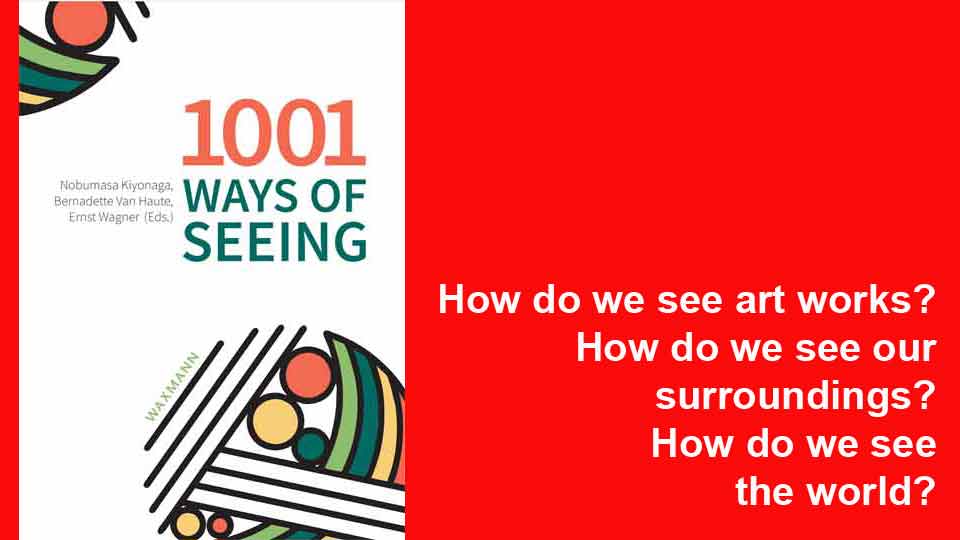Nobumasa Kiyonaga (University of East Asia, Shimonoseki, Japan), Bernadette Van Haute (UNISA, Pretoria, South Africa), and Ernst Wagner (Augsburg University, Germany)

Goals and methods of looking at visual culture in education
An international, comparative study of understanding and interpreting objects of visual culture in the context of education
How do we teach the understanding of artworks / visual objects (architecture, design, media, fashion, any forms of ‘visual culture’) at schools or universities (in teacher training)? In a manifold world of teaching art / art history we want to understand the existing diversity of approaches, goals, methods that are used in different parts of the world. To be able to understand each other and to learn from one another we wish to explore not only the methods/ways but also the backgrounds of the respective educational systems. In our understanding each region, country develops its specific way to address national, cultural needs/requirements on the one hand and the globalized imagery (from social media via popular culture to global art) on the other hand. Three examples:
- In South Africa after the end of Apartheid the call for transformation gave rise to various initiatives such as the decolonisation and Africanisation of art and art history.
- In Japan national identity is becoming an increasing issue in educational policies.
- In Germany the issue how the traditional, Eurocentric canon has to be questioned and what this means for the methods of analysing and interpreting.
A group of scholars have started a research project that allows to map this field:
- Dr. Bernadette Van Haute, Department of Art and Music at UNISA, Pretoria, South Africa
- Dr. Nobumasa Kiyonaga, Faculty of Art of the University of East Asia, Shimonoseki, Japan
- Dr. Ernst Wagner, Academy of Fine Arts, Munich, Germany.
As our research method we will ask leading experts around the globe to write a chapter (in English, max. 3.000 words) answering specific questions related to our topic (see below, grid). These chapters are going to be published in a book (the publishing house Waxmann has already agreed to publish it as part of a series Guiding the eye – Vol. 2), where we bring together different voices around the world in a first section. The grid is needed to allow comparison of the contributions and to draw conclusions that will form the second section where we will analyse those chapters and map what could be found in the world of teaching the understanding of the visual world in (art/history) education.
Research questions
A. Analysis of the situation in the respective country
- What is the term for ‘art interpretation’ / interpretation of visual objects (as a domain of art history / art education) in the respective native language and how can this be translated literally into English? Where does this term come from? What does it transmit in terms of a specific (cultural) meaning in the respective local context?
- Is there a curriculum that addresses interpretation of artworks / visual objects? If yes, translate significant short parts/paragraphs into English in respect of goals, methodological competencies, knowledge/content.
- Which artforms or genres are addressed in the curriculum, e.g. crafts, art (collected in museums), design, fashion, architecture …? Where (which region of the world) do these objects come from? Which periods of time? How is the subject area understood / defined?
- What is the interest of educational policy in the country with regard to this topic, if there is any? How does this policy respond to the situation in the country?
- Are there specific main theories / books / authors / teaching traditions, to which the concepts are related?
- Which methods are used to teach art at school / university, e.g. is artistic work / drawing integrated in the analysis? How do the students become acquainted with the object (at museums, in the street, in books, in presentations by the teacher, internet)? Give a short description of how a typical lesson is conducted.
- Are there standard methods of assessment / evaluation of students’ abilities to understand the visual world?
- What are the historical roots of the current discussions in art education
B. Personal views of the author
- What is the author’s personal opinion on why artworks / visual objects matter in education? Why should students learn about them and how should they understand them?
- An example that is convincing from the author’s point of view; an example that is typical for teaching in my country; an example that exists, but that I don’t like …
